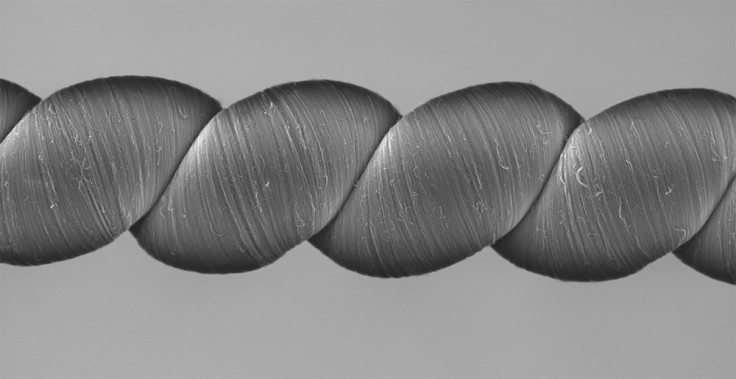Clothes of the future could generate their own electricity using carbon nanotube-based generators
Potential applications for 'Twistron' range from full scale wave power generation to individual fibres in clothing powering sensors.

Researchers at the University of Texas at Dallas and Hanyang University in South Korea have developed a type of carbon nanotube-based yarn that can produce electricity when stretched.
The yarn is made up of carbon nanotubes that have been spun into thread and then twisted into a coil with internal structures that distributed stress evenly among the nanotubes, reports Science Daily. When stretched out, the strain and friction from within the tubes released a charge which they were able to harvest.
The nanotubes that go into making the yarn are reportedly 10,000 times smaller in diameter than human hair and to achieve the level of elasticity that was needed, they "over twisted" the yarn, says the report.
The power output of this material is also surprising, with "Twistron" producing over 250 watts per kg when the coil is stretched 30 times per second. Dr Ray Baughman, corresponding author of the study, said: "No other reported harvester provides such high electrical power or energy output per cycle as ours."
The researchers say that harvesting power from this yarn requires capturing the escaping charges when they are released and the team says that the yarn needs to be coated with or kept submerged in an ionic conducting solution or an electrolyte - any material that can move an ion from one site to another.
While the report says that the team made use of hydrochloric acid, the actual solution can be as simple as salt dissolved in water which can effectively carry charges to electrodes.
Since the sea is pretty much just a large body of electrodes, the team carried out an experiment off the south Korean coast by simply attaching weights to a bit of their special yarn and attaching one end of it to a float and submerging it in the sea. They reportedly made use of platinum electrodes because sea water is highly corrosive.
The output of this setup was recorded at over 90 watts per kg of yarn. Another experiment that the team carried out involved the use of an artificial muscle that contracts when heated. Ars Technica reports that the team was able to produce electricity at every heating and cooling cycle.
When incorporated into fabric, the yarn, immersed in a conductive gel and sewn into a shirt, reportedly produced electrical power every time the wearer breathed.
While the Twistron technology is still in its infancy, the report points out that this could be a way of generating environmental energy. The researchers are looking at generating power from sea waves, changing temperature, or including this yarn in clothing to power various sensors and apparatuses like breathing monitors.
The cost of carbon nanotubes is also falling constantly, so "there is a lot of interest in using waste energy to power the Internet of Things, such as arrays of distributed sensors", said Na Li, one of the researchers from South Korea. "Twistron technology might be exploited for such applications where changing batteries is impractical," he added.
© Copyright IBTimes 2024. All rights reserved.






